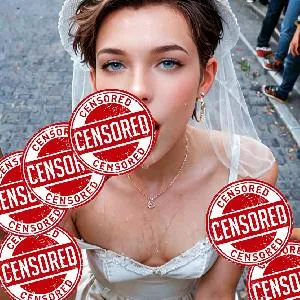The Sociology of Nudity: A Complex Phenomenon
Published: 2024-11-27

Nudity is a ubiquitous aspect of human culture, present in various forms and contexts. From art and photography to social norms and cultural practices, nudity is a complex phenomenon that has been studied and debated by sociologists, anthropologists, and other scholars.
One of the primary ways in which nudity is experienced and perceived is through the lens of social norms. In many cultures, nudity is associated with shame, modesty, and repression. This is reflected in the widespread use of clothing as a means of covering the body, as well as the existence of laws and social norms that prohibit public nudity.
However, there are also cultures and contexts in which nudity is celebrated and accepted. For example, in some indigenous cultures, nudity is a natural and normal part of daily life. In other contexts, such as in art and photography, nudity is used as a means of expressing creativity and challenging social norms.
The rise of AI-generated content has also raised new questions about the sociology of nudity. With the ability to create realistic and convincing images of nudity, AI has the potential to blur the lines between reality and fantasy, and to challenge our understanding of what is real and what is not.
Furthermore, the use of AI-generated content has also raised concerns about the objectification and commodification of the human body. When nudity is created and consumed through digital means, it can be difficult to distinguish between the body as a object of desire and the body as a living, breathing person.
In this article, we will explore the complexities of nudity and its sociology, examining the ways in which it is experienced, perceived, and represented in different cultures and contexts. We will also consider the implications of AI-generated content for our understanding of nudity and its place in society.
The History of Nudity
Nudity has a long and complex history, with evidence of its presence in human culture dating back to ancient times. In many ancient cultures, nudity was associated with spirituality, fertility, and the divine. For example, in ancient Greece and Rome, nudity was a common feature of art and architecture, and was often used to depict the human form in a natural and unadorned state.
However, with the rise of Christianity and other monotheistic religions, nudity became increasingly associated with shame and sin. This led to a shift in cultural attitudes towards nudity, with many societies adopting more modest and repressive attitudes towards the body.
Despite this shift, nudity continued to play an important role in art and culture. From the Renaissance to the present day, nudity has been a staple of art and literature, with many famous works featuring naked or semi-naked figures.
The Sociology of Nudity
The sociology of nudity is a complex and multifaceted field of study, encompassing a wide range of topics and perspectives. From the study of social norms and cultural practices to the analysis of power dynamics and social inequality, the sociology of nudity is a rich and nuanced field that continues to evolve and grow.
One of the primary ways in which sociologists study nudity is through the lens of social norms. By examining the ways in which nudity is perceived and experienced in different cultures and contexts, sociologists can gain a deeper understanding of the social and cultural forces that shape our attitudes towards the body.
Another key area of study in the sociology of nudity is the analysis of power dynamics and social inequality. By examining the ways in which nudity is used to objectify and commodify the human body, sociologists can gain a deeper understanding of the ways in which power is exercised and maintained in society.
The Implications of AI-Generated Content
The rise of AI-generated content has significant implications for our understanding of nudity and its place in society. With the ability to create realistic and convincing images of nudity, AI has the potential to blur the lines between reality and fantasy, and to challenge our understanding of what is real and what is not.
Furthermore, the use of AI-generated content has also raised concerns about the objectification and commodification of the human body. When nudity is created and consumed through digital means, it can be difficult to distinguish between the body as a object of desire and the body as a living, breathing person.
In this article, we will explore the implications of AI-generated content for our understanding of nudity and its place in society. We will examine the ways in which AI-generated content is used and consumed, and consider the potential consequences for our attitudes towards the body and our understanding of reality.






























































































































































































































































































































